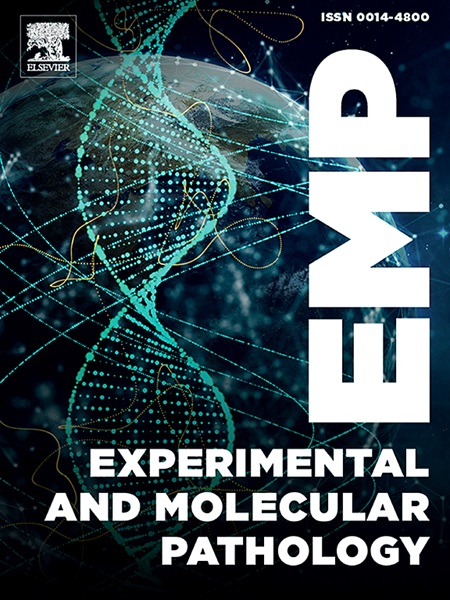The multifunctional protein CCN1/CYR61: Bridging physiology and disease
IF 3.7
4区 医学
Q2 PATHOLOGY
引用次数: 0
Abstract
The matricellular protein CYR61/CCN1 is a member of the CCN protein family that plays significant roles in a broad range of physiological processes, including development, tissue repair, and inflammation, among others. CCN1 is also implicated in pathological conditions such as cancer and fibrosis. The diverse functions of CCN1 arise from its ability to bind different receptors located on many cell types, thereby activating diverse signaling pathways. The diverse, yet contradictory, functions mediated by CCN1 makes it a compelling target for investigation, as it offers the prospect of understanding fundamental cellular topics and their possible implications in various diseases. Recently, new cellular functions were attributed to CCN1, including senescence, pro-/anti- fibrosis, and rejuvenation. In this review, we discuss all these new findings along with the basic knowledge about CCN1 to provide an overall understanding of its conflicting roles and their potential corresponding mechanisms of action.
多功能蛋白CCN1/CYR61:连接生理和疾病
基质细胞蛋白CYR61/CCN1是CCN蛋白家族的一员,在广泛的生理过程中发挥重要作用,包括发育、组织修复和炎症等。CCN1也涉及病理状况,如癌症和纤维化。CCN1的多种功能源于它能够结合位于许多细胞类型上的不同受体,从而激活多种信号通路。CCN1介导的多种多样而又相互矛盾的功能使其成为一个引人注目的研究目标,因为它为理解基本的细胞主题及其在各种疾病中的可能含义提供了前景。最近,新的细胞功能归因于CCN1,包括衰老,促/抗纤维化和年轻化。在这篇综述中,我们讨论了所有这些新发现以及CCN1的基本知识,以全面了解其相互冲突的作用及其潜在的相应作用机制。
本文章由计算机程序翻译,如有差异,请以英文原文为准。
求助全文
约1分钟内获得全文
求助全文
来源期刊
CiteScore
8.90
自引率
0.00%
发文量
78
审稿时长
11.5 weeks
期刊介绍:
Under new editorial leadership, Experimental and Molecular Pathology presents original articles on disease processes in relation to structural and biochemical alterations in mammalian tissues and fluids and on the application of newer techniques of molecular biology to problems of pathology in humans and other animals. The journal also publishes selected interpretive synthesis reviews by bench level investigators working at the "cutting edge" of contemporary research in pathology. In addition, special thematic issues present original research reports that unravel some of Nature''s most jealously guarded secrets on the pathologic basis of disease.
Research Areas include: Stem cells; Neoangiogenesis; Molecular diagnostics; Polymerase chain reaction; In situ hybridization; DNA sequencing; Cell receptors; Carcinogenesis; Pathobiology of neoplasia; Complex infectious diseases; Transplantation; Cytokines; Flow cytomeric analysis; Inflammation; Cellular injury; Immunology and hypersensitivity; Athersclerosis.

 求助内容:
求助内容: 应助结果提醒方式:
应助结果提醒方式:


